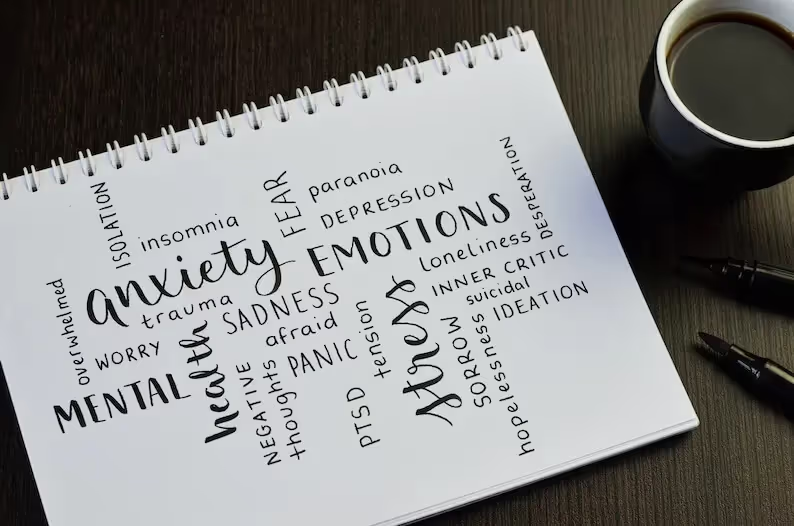Post-Traumatic Stress Disorder (PTSD) is a significant mental health condition that can develop after experiencing or witnessing a traumatic event. While often associated with younger populations, PTSD in older adults is a growing concern, especially as more attention is paid to the long-term effects of traumatic experiences. Understanding the symptoms of PTSD, its risks, and effective treatments is crucial for improving the mental and physical health of older adults.
Recognizing the Symptoms of PTSD in Older Adults
Post-traumatic stress disorder can manifest differently in older adults compared to younger individuals. Symptoms of PTSD in older adults may include:
- Re-experiencing the Traumatic Event: This can occur through intrusive memories, nightmares, or flashbacks. These symptoms often persist for years, even decades, after the traumatic event, significantly affecting the individual's quality of life.
- Avoidance: Many seniors with PTSD may avoid situations, places, or even people that remind them of the traumatic event. This avoidance can lead to social isolation and a decline in physical health.
- Hyperarousal: Symptoms such as irritability, difficulty sleeping, and being easily startled are common in older adults with PTSD. These symptoms can exacerbate other psychiatric conditions, making them harder to manage.
- Negative Changes in Mood and Cognition: Older adults with PTSD may experience feelings of hopelessness, guilt, or shame. They may also have difficulty remembering details of the traumatic event or lose interest in activities they once enjoyed.
Risks and Contributing Factors
Several factors can increase the risk of developing PTSD in older adults. These include:
- Previous Traumatic Experiences: Individuals who have experienced multiple traumatic events throughout their lives are at a higher risk of developing PTSD. These events could range from military combat to personal losses, accidents, or natural disasters.
- Age-Related Vulnerability: As people age, they may become more vulnerable to the effects of trauma due to changes in cognitive function and physical health. Cognitive decline can make it more challenging to process and cope with traumatic memories.
- Comorbid Psychiatric Conditions: Those with existing mental health conditions, such as depression or anxiety, are more likely to develop PTSD. The presence of these conditions can also complicate the treatment of PTSD, requiring a more comprehensive treatment plan.
- Physical Health Decline: The interplay between physical and mental health is particularly evident in older adults. Chronic health conditions such as heart disease or diabetes can exacerbate PTSD symptoms, making it essential for primary care providers to address both physical and mental health conditions.
The Importance of Accurate Diagnosis
Diagnosing PTSD in older adults can be challenging. Symptoms of PTSD can often be mistaken for other psychiatric conditions, such as depression or dementia. Primary care providers play a critical role in the early identification of PTSD by recognizing its unique symptoms in older adults and distinguishing it from other mental health conditions.
Effective Treatment Options for PTSD in Older Adults
There are several effective treatments for PTSD in older adults. These treatments aim to reduce symptoms, improve quality of life, and help individuals regain a sense of control.
- Cognitive Behavioral Therapy (CBT)
Cognitive Behavioral Therapy (CBT) is a widely used treatment for PTSD. This therapy focuses on identifying and changing negative thought patterns that contribute to the symptoms of PTSD. In older adults, CBT can be adapted to address age-specific concerns, such as cognitive decline or physical limitations.
- Eye Movement Desensitization and Reprocessing (EMDR)
Eye Movement Desensitization and Reprocessing (EMDR) is another effective therapy for PTSD. EMDR helps individuals process traumatic memories by focusing on specific eye movements while recalling the traumatic event. This method can be particularly beneficial for individuals who may struggle with traditional talk therapies.
- Medication
Medication can also play a role in the treatment plan for older adults with PTSD. Antidepressants and anti-anxiety medications are commonly prescribed to help manage symptoms. However, it's crucial for healthcare providers to carefully monitor medication use in older adults due to the potential for side effects and interactions with other medications.
- Supportive Therapy
Supportive therapy, which includes counseling and peer support groups, can be particularly beneficial for older adults. These therapies provide a safe space for individuals to share their experiences and receive emotional support from others who have gone through similar traumatic experiences.
The Role of Primary Care in Managing PTSD in Older Adults
Primary care providers are often the first point of contact for older adults with PTSD. As such, they play a crucial role in the early identification, diagnosis, and treatment of PTSD. By being aware of the symptoms of PTSD and understanding the unique challenges faced by older adults, primary care providers can ensure that their patients receive the comprehensive care they need. Primary care providers should also be familiar with the VA/DoD Clinical Practice Guideline and other evidence-based resources to develop effective treatment plans for their patients. Collaboration with mental health specialists, such as psychiatrists or psychologists, is essential for providing holistic care that addresses both the mental and physical health needs of older adults with PTSD. PTSD in older adults is a complex and often overlooked condition that requires careful attention from healthcare providers. With the right support and treatment plan, older adults with PTSD can regain control over their lives and experience improved mental and physical health.


%20(1).jpg)

